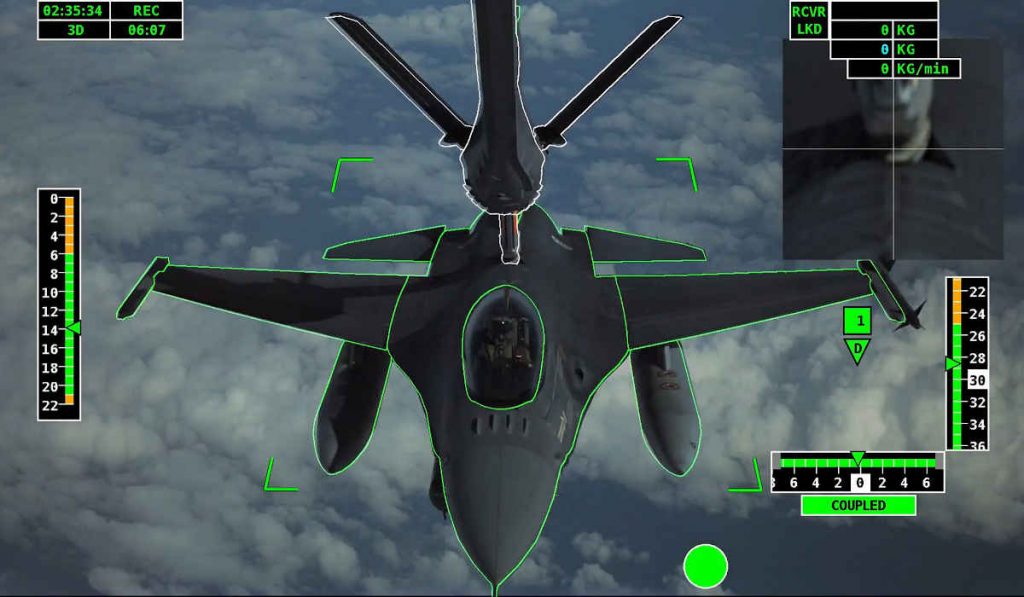
News
Aircraft manufacturers
Military
Airbus achieves first fully automatic refuelling contacts
April 21, 2020 By Wings Staff
 The picture shows the first fully automated refuelling contacts between an Airbus tanker test aircraft and a Portuguese Air Force F-16 fighter jet. (Image: Airbus)
The picture shows the first fully automated refuelling contacts between an Airbus tanker test aircraft and a Portuguese Air Force F-16 fighter jet. (Image: Airbus) Airbus on April 17 announced it had achieved the first ever fully automatic air-to-air refuelling (A3R) operation with a boom system. The flight test campaign, conducted earlier in the year over the Atlantic Ocean, involved an Airbus tanker test aircraft equipped with the Airbus A3R solution, with an F-16 fighter aircraft of the Portuguese Air Force acting as a receiver.
Airbus explains this milestone is part of its industrialization phase of A3R systems ahead of its implementation in the A330 MRTT tanker development.
The campaign achieved a total of 45 flight test hours and 120 dry contacts with the A3R system, covering the whole aerial refuelling envelope, as the F-16 and MRTT consolidate the maturity and capabilities of the development at this stage. The certification phase is scheduled to start in 2021.
“The achievement of this key milestone for the A3R program highlights the A330 MRTT’s excellent capability roadmap development and once more confirms that our tanker is the world’s reference for present and future refuelling operations,” said Didier Plantecoste, Airbus head of Tanker and Derivatives Programs.
Airbus explains the A3R system requires no additional equipment on the receiver aircraft and is intended to reduce air refuelling operator (ARO) workload, improve safety and optimize the rate of air-to-air refuelling transfer in operational conditions, helping maximize aerial superiority. The goal for the A3R system is to develop technologies that will reach fully autonomous capabilities.
Once the system is activated by the ARO, explains Airbus, the A3R flies the boom automatically and keeps the alignment between the boom tip and the receiver receptacle with an accuracy of a couple of centimeters; the proper alignment and the receiver stability is checked in real-time to keep a safe distance between the boom and the receiver and also to determine the optimum moment to extend the telescopic beam to achieve the connection with the receiver.
At this point, Airbus continues to explain, the fuel transfer is initiated to fill up the receiver aircraft and once completed and the disconnection is commanded, the boom is cleared away from the receiver by retracting the telescopic beam and flying the boom away to keep a safe separation distance. During this process, the ARO simply monitors the operation.